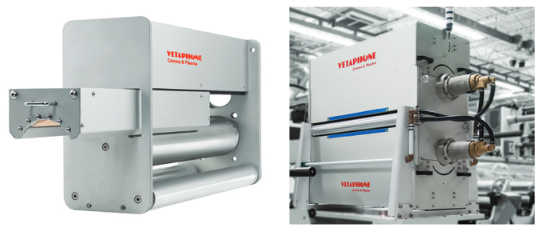Surface treatment for labels
- Published: October 05, 2020
Evolving technology in a changing market

Anyone who has tried to write on plastic and then rubbed the ink with their finger or thumb will immediately understand the major problem that faced the package print industry in the years that followed World War 2. The need for surface treatment to improve the adhesive quality of ink and lacquers on plastic surfaces, which was established back in the 1950s, led to the invention and development of what has become universally known as Corona treatment. It was the brainchild of a Danish engineer, Verner Eisby, whose company
Vetaphone has continued to pioneer the technology in the intervening years.
Today, the company, which is under second generation ownership/management, remains at the forefront of surface treatment knowledge and expertise with a market share in the narrow web sector in excess of 80%. But while the problem of ink and lacquer adherence remains unchanged, the technology required to achieve optimum results has changed considerably, as Vetaphone CEO Frank Eisby explained.
“The problems facing narrow web converters now require a greater degree of understanding if the surface treatment applied is to be effective in today’s increasingly sophisticated market. Far from ‘buy, install, set, and forget’, surface treatment has become as integral to quality production as any other part of the printing process, and to ensure you are using it correctly, you need to understand its operational parameters.”
To simplify matters, Eisby splits the process into three clearly definable requirements. First, there is the need for simple Corona treatment, and this applies to virtually all narrow web press applications. It will typically require a Corona unit to deliver a power rating of 1.5 – 2.0 kW and provide excellent performance on standard substrates run off at low to medium speeds.
The second section has been created by the development of new and more difficult substrates. These are run off on the latest generation of narrow web presses that have been optimised by manufacturers for high speed production. These factors place an increased demand on the Corona unit to deliver the correct dyne level, which typically needs to be rated at 3.0 – 5.0 kW. To understand this concept, think of the similar situation with UV curing, where dwell time under the lamp, defined by power rating and running speed, are critical to achieving a complete cure.
The third and final section relates to those substrates that have been developed to produce what Vetaphone calls ‘unique’ labels, typically using special inks and lacquers, lamination, multi web applications and other techniques to produce sophisticated products. The chemical constituents of these substrates require a chemical treatment process as well as a physical one – and in these instances Plasma treatment is necessary to ensure bonding. Plasma should not be considered as a replacement for Corona, more as a logical development of technology to keep pace with the requirements of more sophisticated materials and processes.
Eisby concluded: “With print quality taken as ‘a given’ in today’s market, it is essential that converters appreciate the importance of what can appear to be a minor ancillary process. It’s only as ‘minor’ as expecting a performance car to run properly on low grade fuel. Converters need to wise-up on what all their technology can do for them – and not allow surface treatment to be the forgotten element.”
For more detailed information or to discuss specific substrate applications, please login to: www.vetaphone.com




